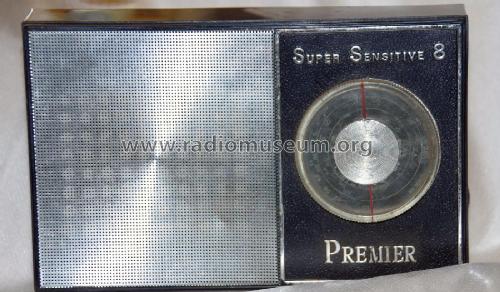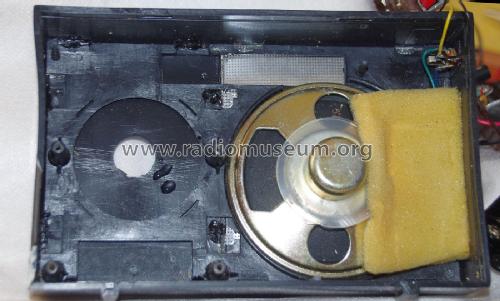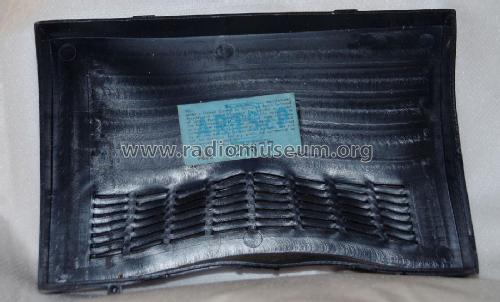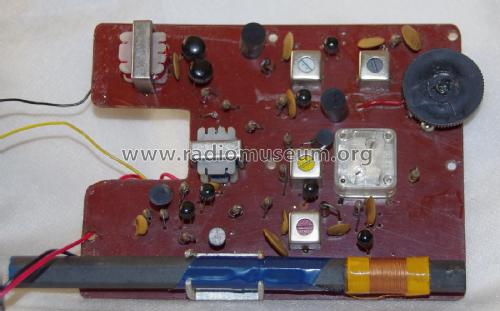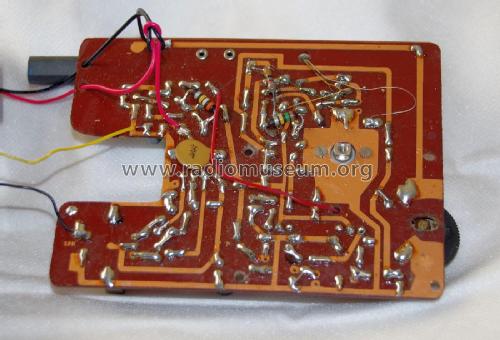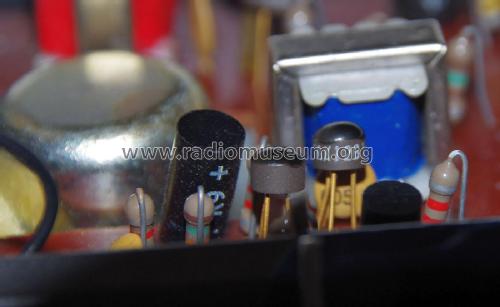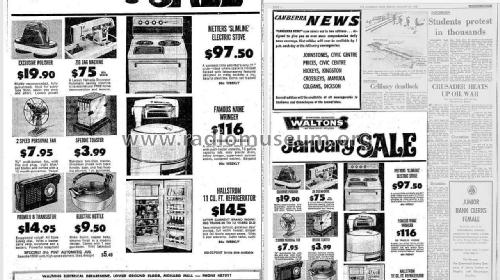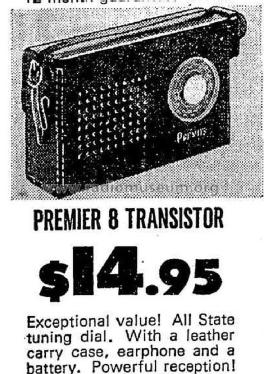Premier 8
Unknown - CUSTOM BUILT: Australia (AUS)
- Country
- Australia
- Manufacturer / Brand
- Unknown - CUSTOM BUILT: Australia (AUS)
- Year
- 1970 ?
- Category
- Broadcast Receiver - or past WW2 Tuner
- Radiomuseum.org ID
- 349808
- Number of Tubes
- 8
- Valves / Tubes
- Number of Transistors
- 8
- Semiconductors
- unknown_tr unknown_tr unknown_tr unknown_tr unknown_tr unknown_tr AX1262 AX1262
- Main principle
- Superheterodyne (common)
- Wave bands
- Broadcast only (MW).
- Power type and voltage
- Dry Batteries / AA: 4 X 1.5 Volt
- Loudspeaker
- Permanent Magnet Dynamic (PDyn) Loudspeaker (moving coil) / Ø 3 inch = 7.6 cm
- Material
- Plastics (no bakelite or catalin)
- from Radiomuseum.org
- Model: Premier 8 - Unknown - CUSTOM BUILT:
- Shape
- Very small Portable or Pocket-Set (Handheld) < 8 inch.
- Dimensions (WHD)
- 160 x 110 x 40 mm / 6.3 x 4.3 x 1.6 inch
- Notes
-
This radio is an "Orphan". The manufacturer is unknown and the radio exists, in print, only in advertising from one Department Store.
The transistors appear to be Fairchild (Australia) from the physical appearance and the colour of the wires. The 4 in the AF end are marked with the Fairchild logo. The other 4 have no markings, not even a coloured dot.
The two 2AX1262 transistors are clearly in the position to drive the output audio transformer but there is no heatsink or NTC thermistor visible. These are designated AX1262 in the transistor lineup.The first 4 and the two AX1261 transistors are marked as "unknown-tr". Hopefully, more information on these will come to light and we can update.
There are two glass diodes, painted red with a white band to one end. The designation 2AXnnnn is unusual and I believe that these may have come from Fairchild as a 'matched pair'.
Fairchild was at great pains in the 1970s to get the thermal characteristics of their moulding plastic and the wires to the silicon chip, matching, to ensure a complete, permanent seal.
This is basically a good radio let down by, probably, economic constraints. The tuning capacitor is of the miniature plastic type and whilst distant, high-powered stations can be tuned, they are easily lost as a hand is removed from the tuning knob. The radio could be used well outside the immediate region of the major cities but careful tuning would be required.
That tuning knob is the 180-degree style but only 52mm in diameter while the ferrite rod antenna is a generous 140mm long. The resistors are a mix of carbon and metal types.
There is no schematic available but there are 4 RF/IF style cans and two audio-style transformers.
Power is supplied by 4 AA type batteries and the speaker magnet assembly measures only 22mm in diameter. A maximum of 0.2 watts output would be an educated guess.
The radio came with a carry case, claimed to be leather but actually plastic bonded to cardboard.
This radio is designed NOT to be serviced. The circuit board can only be accessed by prizing off the circular aluminium disk in the centre of the tuning knob. This is glued in place during manufacture.
- Price in first year of sale
- 14.95 AUD
- Mentioned in
- -- Original prospect or advert (Canberra Times Jan 23, 1970, Page 6.)
- Author
- Model page created by Brian Wilson. See "Data change" for further contributors.
- Other Models
-
Here you find 18 models, 15 with images and 1 with schematics for wireless sets etc. In French: TSF for Télégraphie sans fil.
All listed radios etc. from Unknown - CUSTOM BUILT: Australia (AUS)
Collections
The model Premier 8 is part of the collections of the following members.
